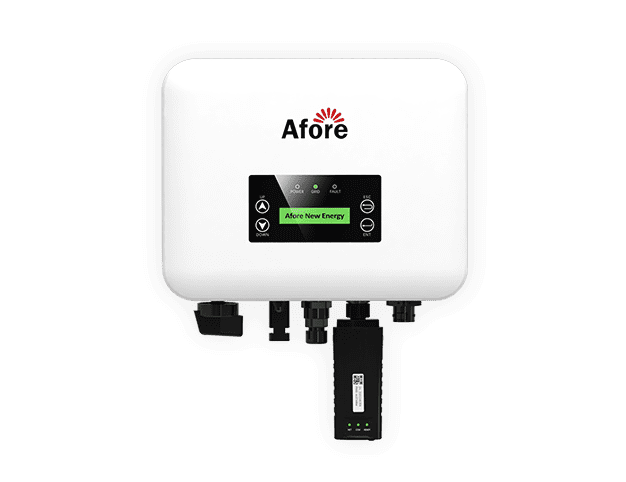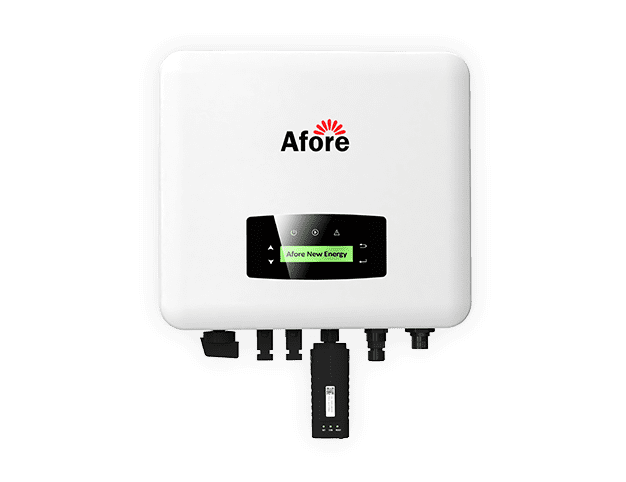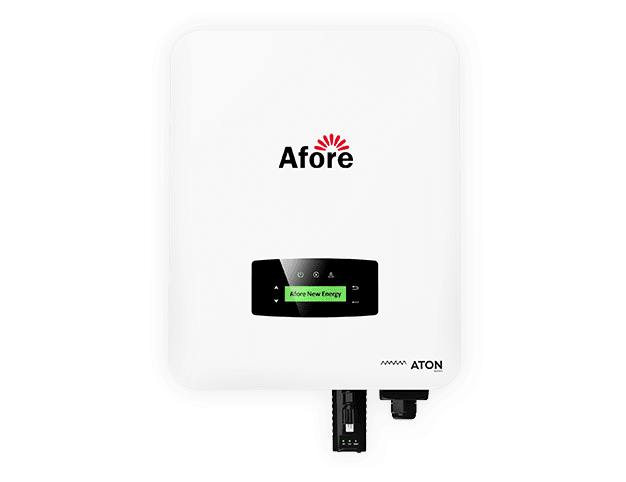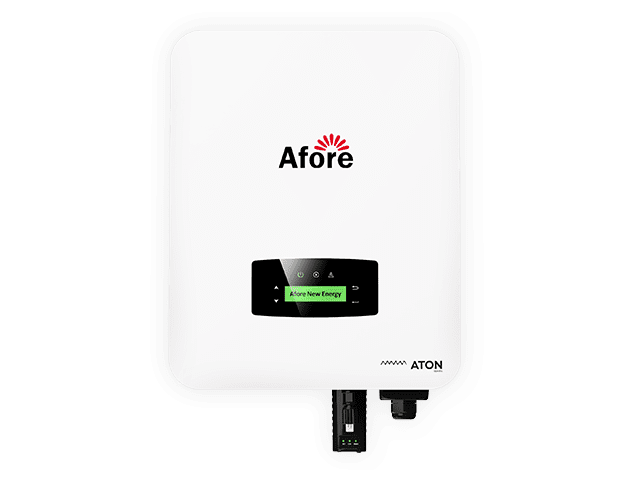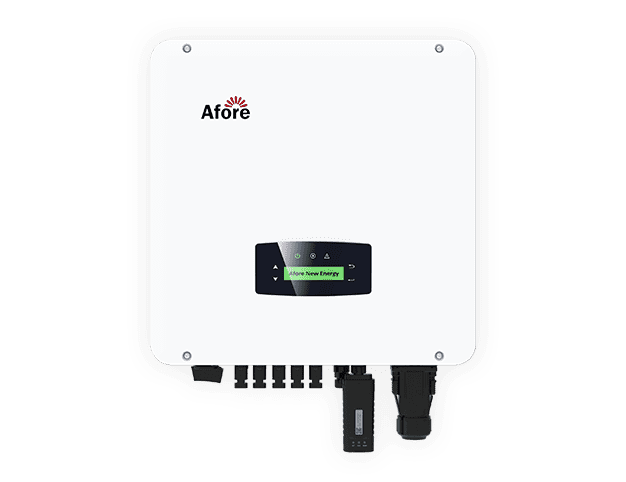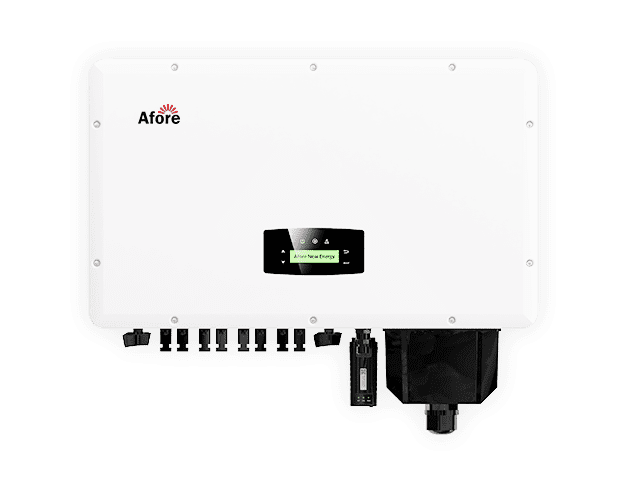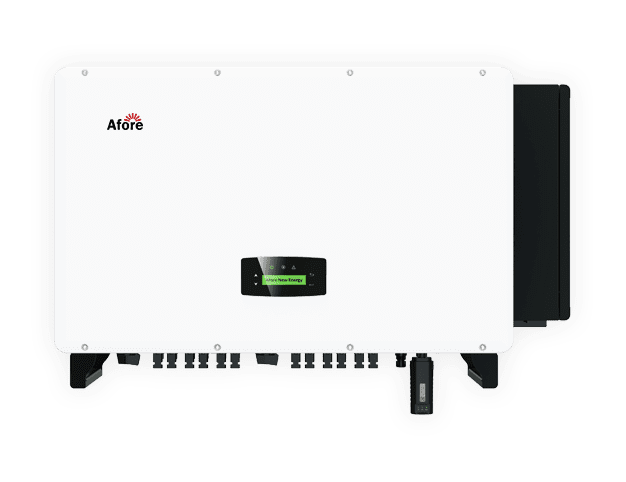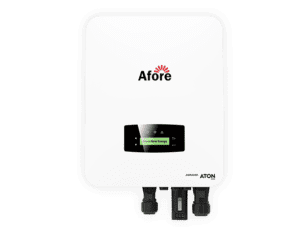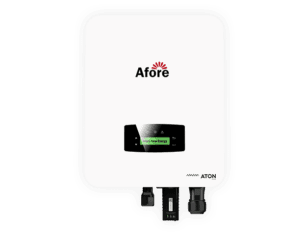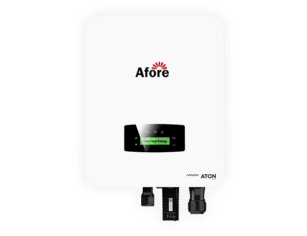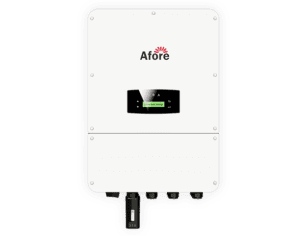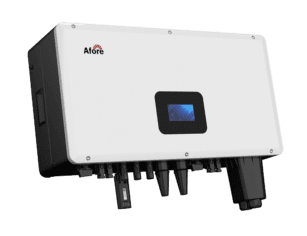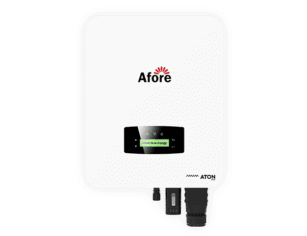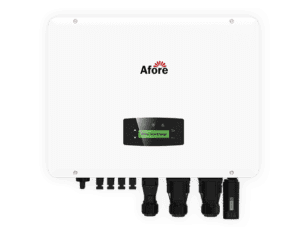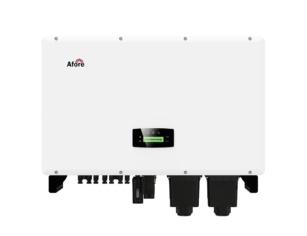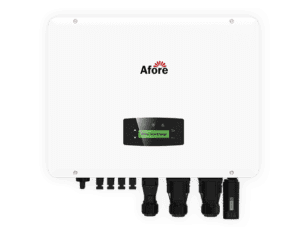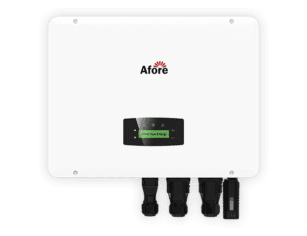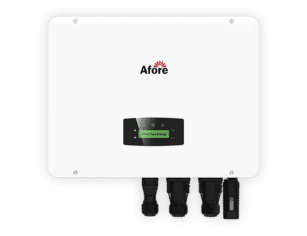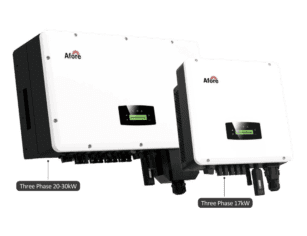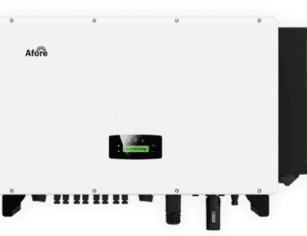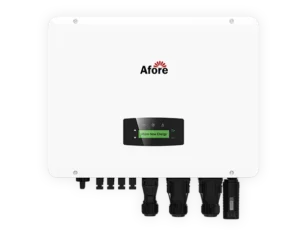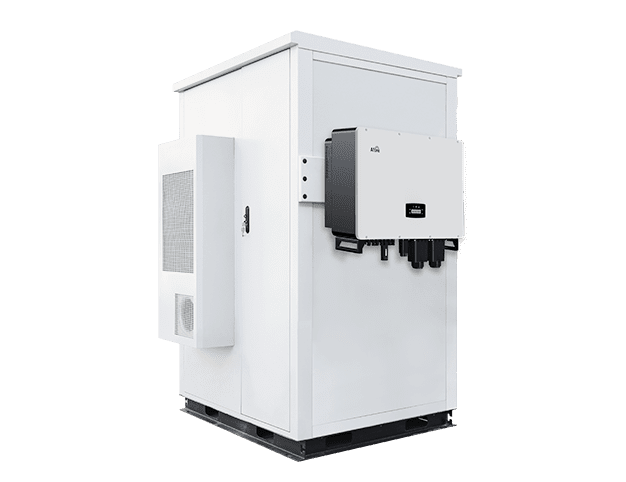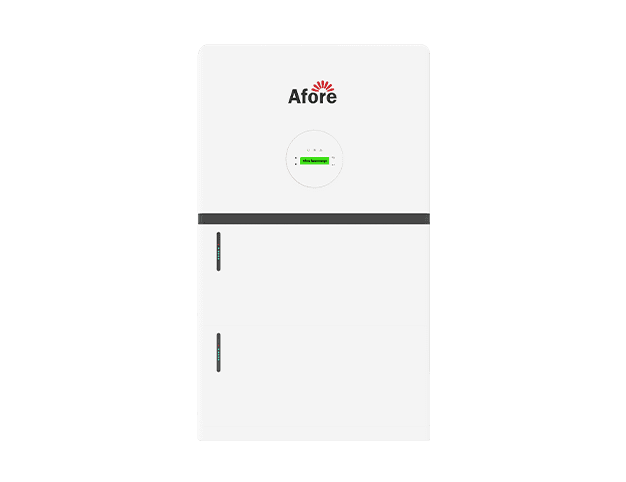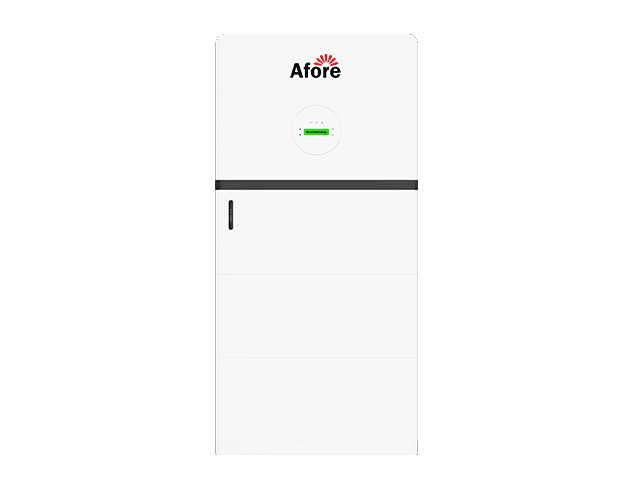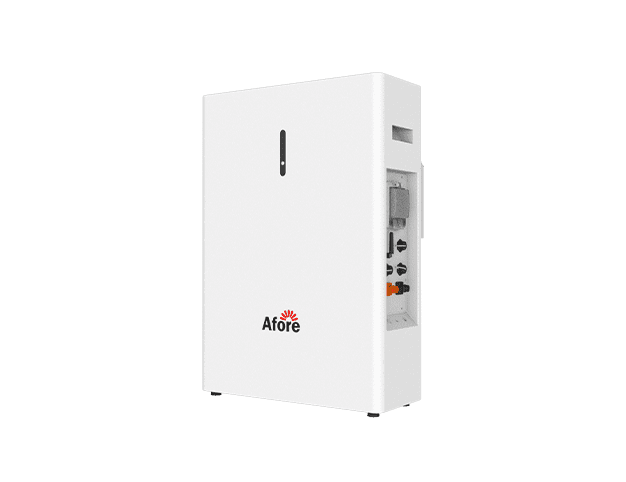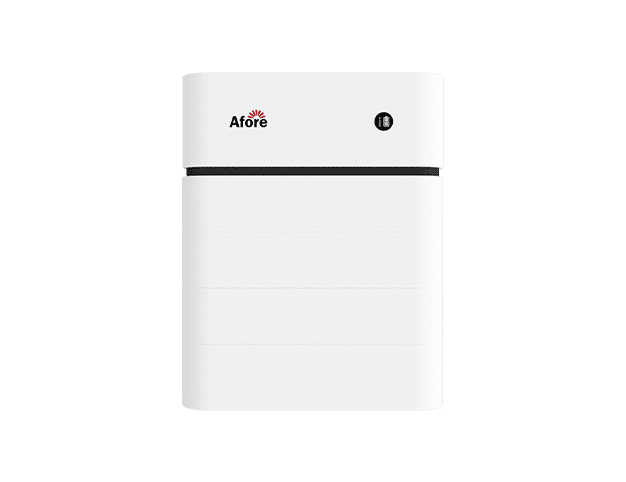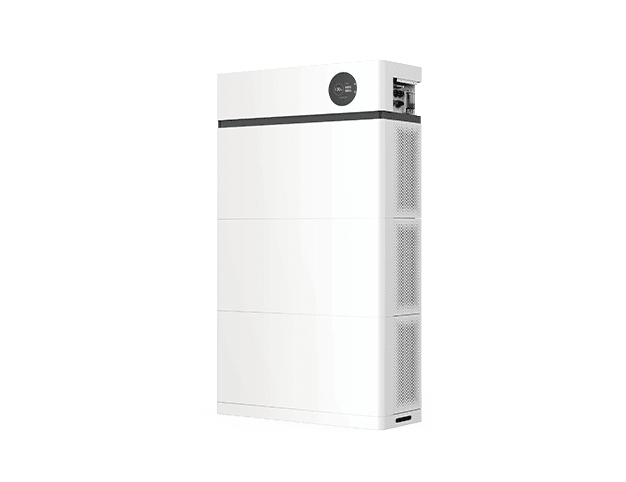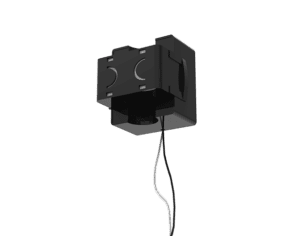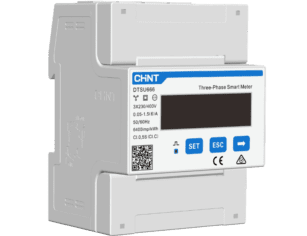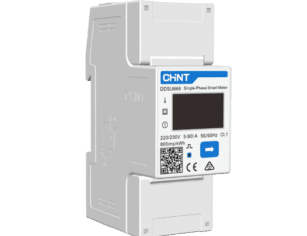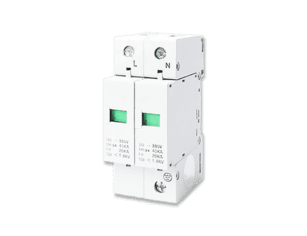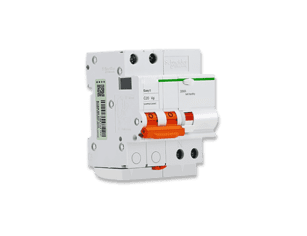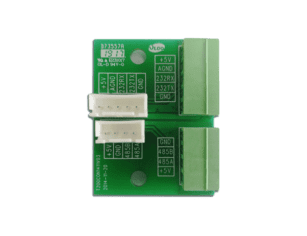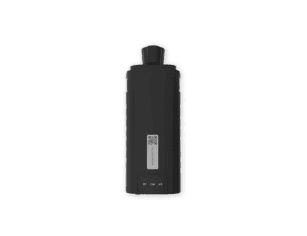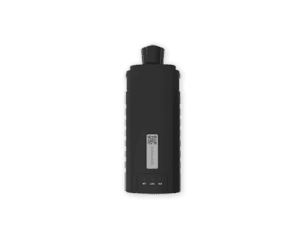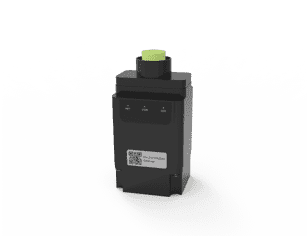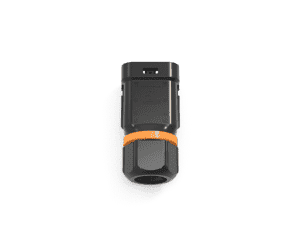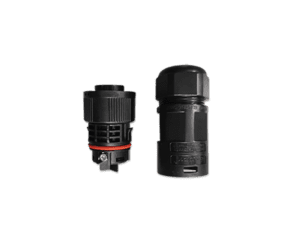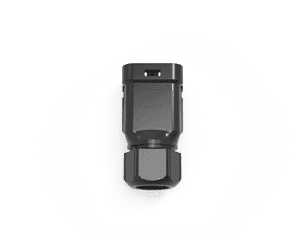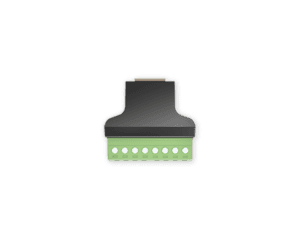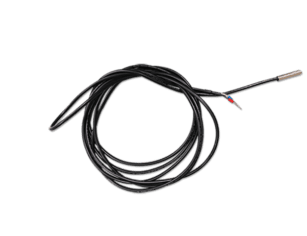Пояснення щодо відсікання інвертора: Максимізуйте свою сонячну потужність

Зміст
Коли домовласники або підприємства вперше встановлюють сонячну електростанцію, один з термінів, який часто з'являється під час проектування системи, - це “відсікання” інвертора. Якщо ви коли-небудь дивилися на свій додаток для моніторингу і дивувалися, чому ваш графік виробництва "вирівнюється" посеред ідеально сонячного дня, ви, ймовірно, бачили відсікання інвертора в дії. Але що це означає, чи шкідливо це для вашого сонячного інвертора, і що ви можете з цим зробити?
У цьому вичерпному посібнику ви знайдете все, що вам потрібно знати про відсікання інвертора: що це таке, коли це насправді добре, як цього уникнути та як визначити, чи відбувається щось більш серйозне з вашим сонячним інвертором. Ми також відповімо на найпоширеніші запитання, які виникають у домовласників, отримані безпосередньо від сонячних спільнот та реальних інсталяцій.
Що таке інверторне відсікання?
Визначення кліппінгу в сонячних системах
По суті, відсікання інвертора відбувається, коли ваші сонячні панелі виробляють більше енергії постійного струму, ніж ваш інвертор здатен перетворити на змінний струм. Іншими словами, панелі кажуть: “Ось 6 кіловат енергії сонячного світла”, але інвертор розрахований лише на 5 кіловат. Що відбувається в результаті? Зайва потужність просто “відсікається”.
Ви побачите це на графіках виробництва у вигляді плоского плато на номінальній потужності інвертора. Замість того, щоб крива продовжувала підніматися вгору, коли сонячне світло досягає піку, лінія обривається прямо на максимальній потужності інвертора.
Чому відбувається відсікання
Найпоширенішою причиною відсікання інвертора є занадто великий розмір сонячної батареї порівняно з номіналом інвертора. Проектувальники часто створюють системи зі співвідношенням постійного та змінного струму більше ніж 1:1. Наприклад, масив потужністю 7 кВт в парі з інвертором потужністю 6 кВт. Це зроблено навмисно - так інвертор частіше працює ближче до свого максимуму, покращуючи збір енергії в цілому.
Умови навколишнього середовища також відіграють певну роль. Свіжий, прохолодний, безхмарний весняний ранок з яскравим сонцем може створити ідеальні умови для того, щоб панелі ненадовго перевершили очікування, що призведе до відсікання. Орієнтація та нахил панелей, а також наявність відбиваючих поверхонь поблизу також можуть підвищити миттєву продуктивність.
Типи сонячних інверторних систем та поведінка відсікання
Різні типи інверторів реагують на відсікання по-різному:
- Рядкові інвертори справляються з цим, обмежуючи вивід по всьому рядку.
- Мікроінвертори можуть закріплювати панель за панеллю, залежно від місцевих умов.
- Оптимізатори з центральним інвертором балансують між максимізацією виробництва та дотриманням безпечних меж інвертора.
У кожному разі, саме по собі відсікання не означає, що обладнання вийшло з ладу. Це вбудована функція безпеки.
При виборі сонячного інвертора дуже важливо враховувати репутацію виробника та технологію, яка лежить в основі його продукції. Наприклад, Перед тим, як пропонує цілий ряд гібридні інвертори розроблений для оптимізації енергоефективності та мінімізації відсікання.
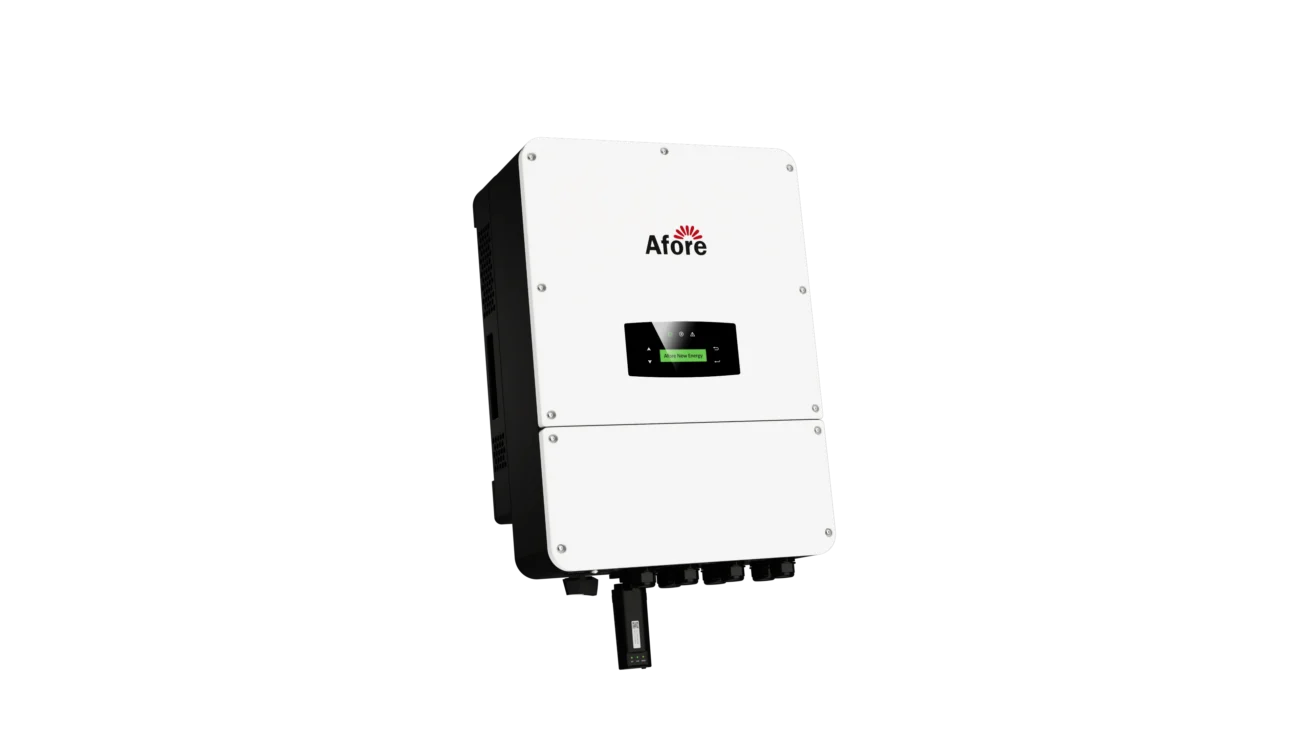
Чи погано відсікання для інверторів?
Вплив на довговічність обладнання та гарантію
Серед власників сонячних електростанцій поширеним питанням є те, чи не спричиняє обрізання інвертора надмірне навантаження на сонячний інвертор. Заспокійлива відповідь полягає в тому, що саме по собі відсікання не пошкоджує обладнання. Сучасні інвертори оснащені захисними механізмами, які дозволяють їм безпечно обмежувати вихідну потужність, не перевантажуючи внутрішні компоненти.
Уявіть собі, що це круїз-контроль в автомобілі. Навіть якщо ви сильніше натиснете на педаль газу, автомобіль не перевищить задану швидкість. Так само, коли сонячні панелі виробляють більше енергії постійного струму, ніж інвертор може обробити, інвертор просто регулює потік. Він не перенапружується, а підтримує безпечну робочу межу.
Тим не менш, проблеми можуть виникнути, якщо система погано спроектована. Виробники публікують рекомендовані співвідношення постійного і змінного струму для кожної моделі. Дотримання цих рекомендацій гарантує, що відсікання залишається безпечною та очікуваною подією. Однак, якщо розмір системи перевищує технічні характеристики - наприклад, інвертор потужністю 5 кВт з панелями потужністю 8 або 9 кВт - інвертор може бути змушений працювати за межами свого ідеального діапазону. У таких випадках надмірне навантаження може скоротити термін його служби і навіть призвести до втрати гарантії.
Гарантійне покриття - ще один ключовий фактор. Більшість виробників вказують у своїх специфікаціях, які співвідношення є прийнятними. Якщо інсталятор конфігурує систему, що виходить за ці межі, і виникають проблеми, виробник може відмовити в гарантійному обслуговуванні. Домовласники повинні завжди підтверджувати, що їхня установка сонячного інвертора відповідає офіційним рекомендаціям виробника.
Наслідки фінансових та енергетичних втрат
Хоча відключення інвертора, як правило, нешкідливе для обладнання, воно має фінансові наслідки. Кожна відключена кіловат-годину - це кіловат-годину, яка не живить ваш будинок і не компенсує ваш рахунок за електроенергію. З часом ці невеликі щоденні втрати можуть накопичуватися.
Наприклад, уявіть собі інвертор потужністю 6 кВт в парі з сонячною батареєю потужністю 7,5 кВт. У кілька яскравих літніх днів ви можете втратити 2-3% вашої потенційної енергії через відсікання. Протягом року це може означати, що десятки кіловат-годин ніколи не потраплять до вашого будинку або назад в мережу. Якщо ваша енергопостачальна компанія щедро нараховує вам плату за експортовану енергію, ця втрата може мати значні фінансові наслідки.
Однак є й інша сторона медалі. Збільшення розміру масиву постійного струму часто підвищує загальний річний виробіток, навіть після врахування відсікання. Більший масив дозволяє інвертору працювати ближче до максимуму вранці, вдень і в похмуру погоду, генеруючи більше енергії за межами пікового вікна відсікання. Незначна втрата енергії в полудень може бути компенсована вищою врожайністю протягом решти року.
Ключовим моментом є баланс. Занадто малий розмір залишає потенційну енергію невикористаною, тоді як занадто великий розмір призводить до хронічного відсікання та марної генерації. Розумний дизайн системи дозволяє знайти золоту середину - максимізувати рентабельність інвестицій, утримуючи при цьому відсікання в прийнятних межах.
Коли інверторне відсікання добре (або прийнятно)?
Компроміси в системному дизайні
На перший погляд, ідея навмисного марнування сонячної енергії здається контрінтуїтивною. Навіщо комусь розробляти систему, яка свідомо відсікає потенційну потужність? Відповідь лежить в площині балансу між вартістю і продуктивністю. У багатьох випадках невелика кількість відсікання інвертора не тільки прийнятна, але й навіть корисна.
Ось чому: сонячні панелі рідко працюють на абсолютному максимумі протягом тривалого часу. Реальні умови - спека, пил, затінення та неідеальні кути падіння сонця - означають, що панелі часто виробляють менше, ніж їхня номінальна потужність. Трохи збільшивши розмір масиву порівняно з сонячним інвертором, власники будинків гарантують, що інвертор досягає своєї повної потужності більш стабільно протягом дня.
Наприклад, поєднання інвертора потужністю 6 кВт з панелями потужністю 7,5 кВт може спричинити відключення на годину-дві в ідеальні літні дні. Але вранці, пізно ввечері та в похмурі дні додаткова потужність дозволяє системі працювати майже на максимумі. Протягом року загальний приріст енергії може значно перевищити кілька годин втрат через відключення.
Іншим важливим фактором є вартість. Більші інвертори значно дорожчі. Приймаючи помірний розмір інвертора, домовласники можуть заощадити на початкових витратах на обладнання, водночас досягаючи високих довгострокових прибутків. Такий підхід до проектування, який часто називають “збільшеним розміром постійного струму”, став галузевим стандартом у багатьох регіонах.
Ситуації, коли обрізання не завдає великої шкоди
Існує також багато сценаріїв, де відсікання інвертора має мінімальний або незначний вплив:
- Рідкісні пікові умови: Відсікання відбувається лише за ідеальних умов - яскравого сонячного світла, прохолодної температури та оптимальної орієнтації панелей. У багатьох кліматичних зонах ці умови обмежені лише кількома годинами на рік.
- Деградація панелей з часом: Сонячні панелі природним чином втрачають ефективність, як правило, близько 0,5% на рік. Система, яка в перші роки свого існування трохи відключається, з віком буде менше відключатись, а це означає, що з часом конструкція стає більш збалансованою.
- Розподілене розташування панелей: Системи з панелями, що виходять на схід і захід, а не всі на південь, часто мають нижчі полуденні піки і більш тривале виробництво вранці та ввечері. Це вирівнює криву і зменшує відсікання.
- Пріоритети власного споживання: Якщо ваше домогосподарство споживає найбільше електроенергії вранці та ввечері, то відключення в обідню пору має менше значення. Система все одно постачатиме електроенергію, коли ви її найбільше потребуєте.
Коротше кажучи, відсікання - це не завжди лихо, яким його малюють. При правильному проектуванні це розрахований компроміс, який робить сонячну енергію більш доступною та ефективною. Для більшості домовласників невеликий ступінь відсікання інвертора - це просто частина оптимізованої сонячної стратегії, а не ознака даремних інвестицій або несправності сонячного інвертора.
Як уникнути або зменшити відсікання інвертора
Правильний вибір розміру інвертора та сонячної батареї (співвідношення постійного та змінного струму)
Найефективніший спосіб тримати під контролем відсікання інвертора - ретельно підібрати потужність сонячної панелі до потужності сонячного інвертора. Це співвідношення відоме як співвідношення постійного і змінного струму. Співвідношення 1:1 (наприклад, 6-кіловатна батарея в парі з 6-кіловатним інвертором) теоретично може повністю усунути відсікання.
Але на практиці більшість інсталяторів рекомендують незначне перевищення - зазвичай від 1,1 до 1,25. Це означає, що інвертор потужністю 6 кВт може працювати в парі з панелями потужністю від 6,6 до 7,5 кВт. Такий підхід забезпечує баланс: достатньо додаткової потужності панелей, щоб збільшити виробництво в неідеальних умовах, не викликаючи при цьому надмірного відсікання в години пікового сонячного сяйва.
Однак перевищення цих обмежень може призвести до хронічного відсікання. Ви не тільки втрачаєте більше потенційної генерації, але й можете експлуатувати інвертор за межами рекомендованих виробником специфікацій, що може вплинути на вашу гарантію. Який висновок? Проектуйте систему в межах безпечних, затверджених галуззю співвідношень, щоб тримати відсікання під контролем, одночасно максимізуючи річну продуктивність.
Розташування системи та орієнтація панелей
Конструкція системи виходить за рамки простої потужності. Розташування панелей на даху також може впливати на відсікання. Якщо кожна панель повернута на південь під ідеальним нахилом, ви побачите різкий полуденний пік - найкращий час для відсікання інвертора. Але якщо ви розташуєте панелі під різними кутами, наприклад, зі сходу та заходу, крива потужності вирівняється.
Такий ступінчастий профіль виробництва зменшує різкі піки та подовжує генерацію вранці та ввечері. В результаті інвертор справляється з навантаженням стабільніше, а відсікання стає менш вираженим.
Інша стратегія - проектування з урахуванням управління затіненням. Якщо ви знаєте, що певні частини масиву будуть затінені в години пікового навантаження, ви можете спланувати його за допомогою оптимізаторів або мікроінверторів. Хоча затінення не є ідеальним рішенням, воно природним чином зменшує ймовірність полуденного відсікання, знижуючи піки вихідної потужності.
Використання акумуляторів або накопичувачів енергії
Зберігання енергії також може бути розумним способом уловлювання електроенергії, яка інакше була б втрачена через відсікання інвертора. За допомогою системи акумуляторів постійного струму надлишкова енергія постійного струму від панелей може бути збережена до того, як вона потрапить до інвертора. Це дозволяє зберігати відсічену енергію і використовувати її пізніше ввечері, коли попит домогосподарств зростає.
Акумуляторні системи з підключенням до мережі змінного струму не запобігають відсіканню, але вони можуть зберігати надлишкову енергію після того, як вона пройшла через сонячний інвертор. Хоча така система не така ефективна, вона все одно збільшує власне споживання і зменшує залежність від мережі.
Додавання сховища також має фінансовий сенс у тих регіонах, де тарифікація здійснюється за часом використання. Електроенергія, накопичена в сонячні години, може компенсувати дорогі вечірні тарифи, допомагаючи перетворити втрачену енергію на пряму економію.
Монітор, прошивка та регулярне обслуговування
Навіть найкраще спроектована система виграє від регулярного моніторингу та обслуговування. Багато власників сонячних електростанцій не помічають відключення інвертора, поки не перевірять графіки виробництва. Пласке плато на максимальній потужності інвертора є чітким індикатором. Відстежуючи ці дані щомісяця, ви швидко побачите, чи є відсікання мінімальним і очікуваним - або ж воно вказує на потенційний недолік конструкції.
Важливо також постійно оновлювати інвертор найновішими версіями прошивки. Виробники часто випускають оновлення для підвищення ефективності, безпеки та сумісності з мережею. Вони можуть допомогти інвертору краще справлятися з коливаннями, потенційно зменшуючи вплив відсікання.
Нарешті, не забувайте про регулярне технічне обслуговування. Переконайтеся, що ваш сонячний інвертор належним чином провітрюється, особливо в жаркому кліматі, де перегрів може призвести до перегріву або вимкнення системи. Очищайте панелі, перевіряйте з'єднання та плануйте періодичні професійні перевірки, щоб система працювала з максимальною продуктивністю.
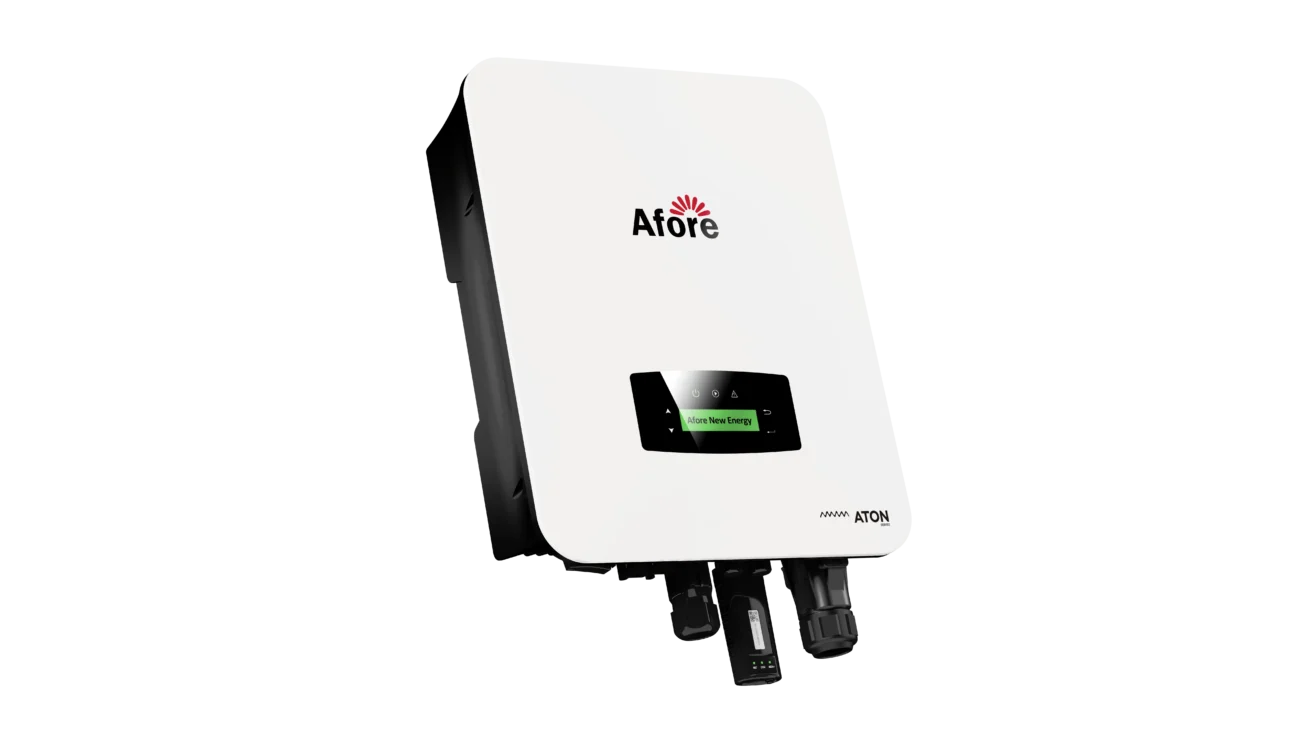
Інші супутні питання: Вимкнення, несправності та ознаки несправності інвертора
Чому мій інвертор постійно вимикається / Чому мій інвертор вимикається?
Іноді власники будинків плутають відключення з вимкненням інвертора. Якщо ваш інвертор постійно вимикається, це може бути саме так:
- Перегрів
- Напруга або частота мережі поза допустимим діапазоном
- Внутрішня несправність компонента
- Несправна проводка або нещільні з'єднання
На відміну від відсікання, яке просто обмежує продуктивність, вимкнення зазвичай вказує на проблему, яка потребує уваги.
Різниця між відсіканням і несправністю
Ось ключова відмінність: відсікання очікуване і передбачене в системі. Несправність включає в себе коди помилок, раптове падіння до нуля вихідного сигналу або нерегулярне вмикання та вимикання.
Ранні ознаки того, що ваш сонячний інвертор виходить з ладу
Слідкуйте за цим:
- Різке падіння добового обсягу виробництва порівняно з історичними показниками
- Часті коди несправностей або попереджувальні повідомлення
- Галаслива робота або незвичне дзижчання
- Дисплей не світиться або світлодіоди блимають нерегулярно
- Запах перегріву або горілого
Це може означати, що термін служби вашого сонячного інвертора наближається до кінця.
Тематичні дослідження / реальні приклади
Хоча відсікання інверторів часто звучить як технічна концепція, що обмежується інструкціями з проектування, в реальності це відбувається щодня на дахах і сонячних електростанціях по всьому світу. Розгляд реальних кейсів допомагає домовласникам і компаніям зрозуміти, коли відсікання є прийнятним, коли воно стає проблемою, і як розумне планування може перетворити його на проблему, що не виникає.
Приклад 1: Житловий дах з м'яким підстриганням
Домовласник у Сіднеї встановив сонячний інвертор потужністю 6 кВт у парі з сонячною батареєю потужністю 7,2 кВт. На папері система була завеликою, і інсталятор попередив, що під час полуденних піків може відбуватися відсікання.
Виробничі дані показували саме це: між 11 ранку та 2 годинами дня у сонячні весняні дні вихідна потужність інвертора вирівнювалася на позначці 6 кВт. Але за весь рік на відсікання припадало менше 2% від загальної генерації. Незначні полуденні втрати були більш ніж компенсовані більш високою ранковою та вечірньою генерацією.
Урок: Помірне збільшення розмірів може збільшити загальну річну енергію, зберігаючи при цьому мінімальну кількість обрізок. Для власників будинків це часто є найбільш економічно ефективною стратегією.
Приклад 2: Комерційна офісна будівля з великими габаритами
Комерційна будівля в Каліфорнії встановила сонячний інвертор потужністю 50 кВт з панелями потужністю 70 кВт, щоб максимізувати простір на даху. Хоча ця конструкція виглядала добре на папері, інвертор майже щодня виходив з ладу в години пікового навантаження.
Втрати від обрізання оцінювалися майже в 10% на рік - набагато більше, ніж очікувалося. Підприємство все ще заощаджувало на рахунках за електроенергію, але рентабельність інвестицій була нижчою, ніж прогнозувалося, через марну генерацію.
Щоб виправити цю проблему, компанія додала акумуляторну систему, яка поглинала більшу частину відсіченої енергії. Це дозволило їм використовувати накопичену енергію у вечірній час, зменшивши витрати на споживання та підвищивши загальну продуктивність системи.
Урок: Агресивне збільшення розміру може призвести до зворотних наслідків, якщо воно не поєднується зі сховищем або вдосконаленим управлінням навантаженням.
Приклад 3: Сільський будинок з орієнтацією панелей зі сходу на захід
Власник сільського будинку в Німеччині зіткнувся з унікальною проблемою: обмежений простір на даху, що виходить на південь. Інсталятор розмістив половину панелей на східному даху, а половину - на західному. У системі використовувався сонячний інвертор потужністю 5 кВт з панелями потужністю 6 кВт.
Результат? Панелі зі східного боку збільшували виробництво вранці, масив із західного боку працював до вечора, а полуденний пік ніколи не перевантажував інвертор. Відсікання відбувалося дуже рідко, і система підтримувала плавну криву виробництва.
Урок: Розумний дизайн макета може значно зменшити кількість відсікань без збільшення витрат.
Практичний приклад 4: Сонячна електростанція комунального масштабу з навмисним відсіканням
На сонячній електростанції в Арізоні розробники навмисно збільшили розмір масиву майже на 40% порівняно з потужністю інвертора. Їхні міркування були простими: більшу частину року панелі виробляють набагато менше своєї номінальної потужності через спеку, пил та неоптимальні умови.
Так, відключення відбувалися регулярно в найяскравіші та найпрохолодніші дні. Але річні дані про виробництво підтвердили, що стратегія спрацювала - загальне виробництво енергії було набагато вищим, ніж якби вони підібрали розмір масиву відповідно до інверторів. Незначне полуденне відсікання більш ніж компенсувалося більш потужною генерацією в непікові моменти.
Урок: У масштабах, відсікання інвертора може бути стратегічним вибором, який максимізує довгострокові прибутки.
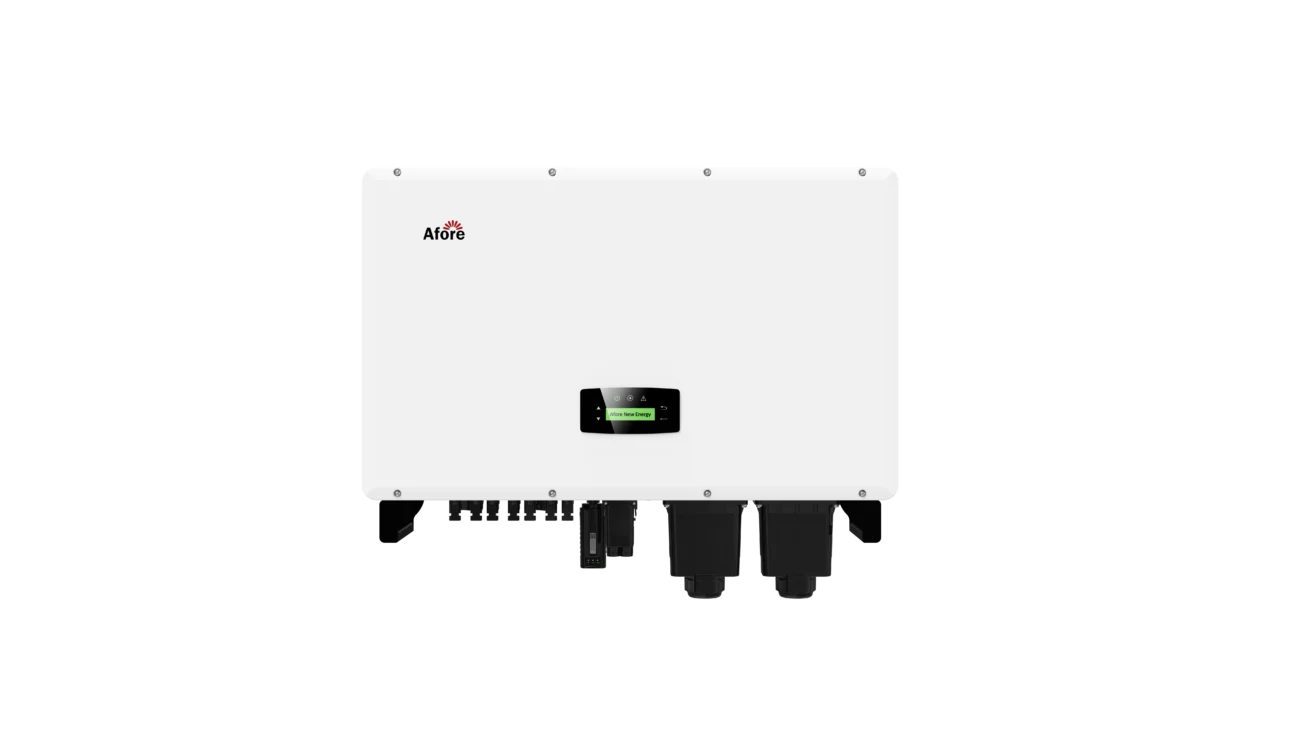
Кращі практики та рекомендації (для власників будинків / монтажників)
Контрольний список проектування перед установкою
Найкращий спосіб керувати відсіканням інвертора - це уникати серйозних помилок при проектуванні з самого початку. І власники будинків, і монтажники повинні дотримуватися чіткого контрольного списку перед установкою:
- Перевірте співвідношення постійного та змінного струму - дотримуйтесь затверджених виробником обмежень щодо збільшення розміру. Невелике перевищення (зазвичай до 25%) є нормальним і навіть корисним, але надмірне перевищення призводить до непотрібних втрат на відсікання.
- Узгоджуйте цілі системи - якщо вашим пріоритетом є максимізація річного виробітку, невелике відсікання є прийнятним. Якщо ви хочете отримати кожну можливу кіловат-годину, подумайте про більший сонячний інвертор або додайте накопичувач.
- Подумайте про орієнтацію панелей - використання комбінації панелей, орієнтованих на схід і захід, може згладити виробництво, зменшити різкі полуденні піки і обмежити обрізання.
- Ознайомтеся з умовами гарантії - виробники часто вказують максимально допустимі співвідношення. Перевищення цих значень може поставити під загрозу покриття в разі виходу інвертора з ладу.
- Бюджет на майбутнє - якщо акумуляторна батарея входить до ваших довгострокових планів, проектуйте її з урахуванням цього. Це може змінити баланс між потужністю панелі та інвертора.
Дотримуючись цих кроків, інсталятори можуть спроектувати системи, які утримують відсікання інвертора на прийнятному рівні, забезпечуючи при цьому відмінну продуктивність і фінансову віддачу.
Оперативне обслуговування
Навіть після добре спроектованої установки обслуговування системи відіграє важливу роль в управлінні ефективністю. Належне технічне обслуговування не тільки гарантує безпечну роботу вашого сонячного інвертора, але й допомагає виявити проблеми, які можуть бути схожі на відключення або перебільшувати його вплив.
- Відстежуйте виробничі дані: Шукайте плоскі лінії на максимальній потужності інвертора. Деякі обриви є нормальним явищем, але тривалі плато в несподівані моменти часу можуть свідчити про проблеми з конструкцією або обладнанням.
- Тримайте панелі в чистоті: Пил і бруд зменшують генерацію, що, за іронією долі, знижує відсікання, але також знижує загальний вихід енергії. Чисті панелі означають оптимальну продуктивність.
- Забезпечте належну вентиляцію: Перегрів може призвести до того, що інвертор зменшить потужність або вимкнеться, імітуючи відсікання. Забезпечте вільний доступ повітря навколо інвертора, особливо в умовах спекотного клімату.
- Застосовуйте оновлення прошивки: Виробники випускають оновлення, які покращують продуктивність інвертора та сумісність з мережею. Постійне оновлення забезпечує безперебійну роботу системи.
Невеликий проактивний догляд має велике значення для запобігання падінню продуктивності, яке може замаскувати або погіршити відсікання інвертора.
Коли слід звернутися до фахівців / замінити інвертор
Іноді, навіть при ретельному проектуванні та регулярному обслуговуванні, виникають проблеми. Важливо знати, коли обрізання - це просто частина нормальної роботи, а коли - симптом чогось серйознішого.
- Часті вимкнення: Якщо ваш сонячний інвертор зупиняється і запускається неодноразово, це не відсікання - це може бути сигналом перегріву, проблем з мережею або внутрішніх несправностей.
- Незвичайний шум або коди помилок: Сучасні інвертори мають діагностичні коди. Якщо ви бачите повторювані повідомлення про помилки, проконсультуйтеся з інсталятором або виробником.
- Надмірне відсікання за межами очікувань: Якщо ваші виробничі дані показують, що втрати значно перевищують прогнози інсталятора, можливо, настав час для професійної оцінки.
- Закінчення гарантії / термін служби: Більшість інверторів працюють 10-15 років. Якщо ваш інвертор досягає цього віку і демонструє проблеми з продуктивністю, заміна може бути більш економічно вигідною, ніж ремонт.
Коротше кажучи, саме по собі відключення інвертора зазвичай нешкідливе. Але коли ви помічаєте постійні вимкнення, ненормальну поведінку або втрати, які не відповідають проекту вашої системи, настав час залучити кваліфікованого спеціаліста з сонячної енергетики. Вирішення проблем на ранній стадії захистить як ваші інвестиції, так і вашу енергетичну незалежність.
Заключні думки
Відсікання інвертора може здатися проблемою, але зазвичай це просто частина розумного сонячного проектування. Невелика кількість обрізків не зашкодить вашому сонячному інвертору і навіть може підвищити рентабельність інвестицій. Ключовим моментом є баланс: не збільшуйте розмір масиву настільки, щоб витрачати енергію щодня, але й не зменшуйте настільки, щоб інвертор рідко виходив на повну потужність.
Контролюючи свою систему, проводячи технічне обслуговування та співпрацюючи з досвідченими інсталяторами, ви можете гарантувати, що ваші інвестиції в сонячну енергетику будуть забезпечувати надійну та ефективну енергію протягом десятиліть.
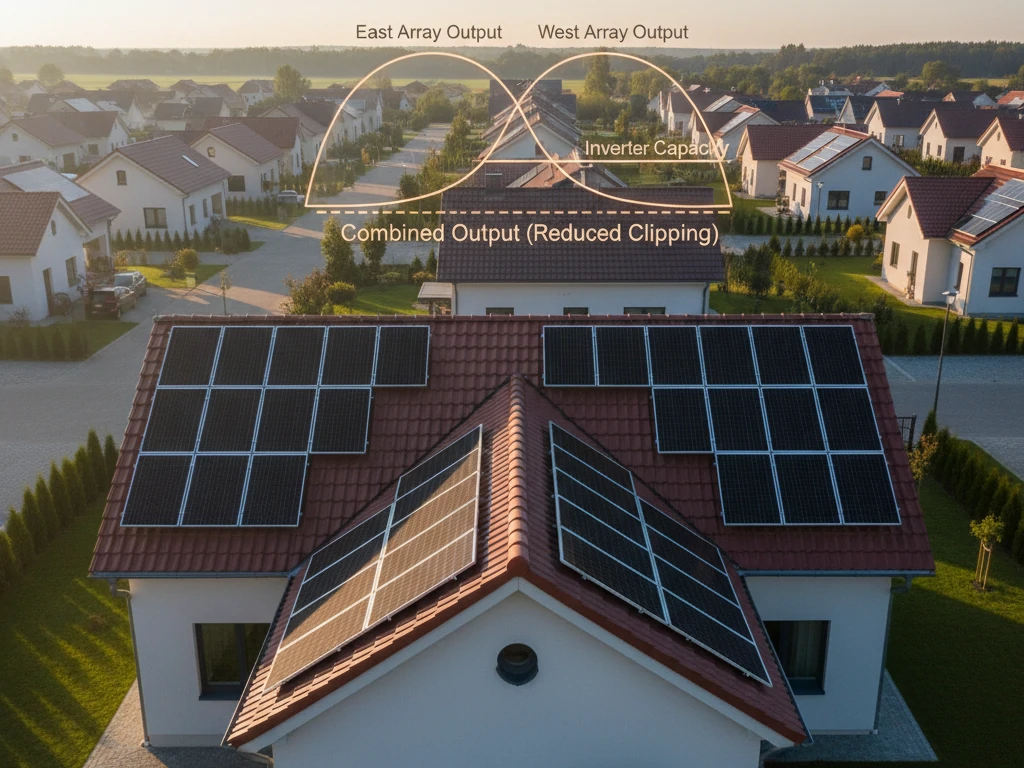
Поширені запитання
-
Чи погано відсікання для інверторів?
Ні, відключення інвертора не є шкідливим для самого сонячного інвертора. Інвертори розроблені з вбудованим захистом, який безпечно обмежує вихідну потужність. Подумайте про це як про круїз-контроль на автомобілі - незалежно від того, скільки енергії виробляють панелі, інвертор не перевищить свого максимального номіналу. Єдина "втрата" - це потенційна генерація енергії, а не пошкодження обладнання.
-
Як уникнути відсікання інвертора?
Ви можете зменшити відсікання інвертора, правильно підібравши розмір вашої системи. Це означає, що сонячна батарея та сонячний інвертор повинні відповідати рекомендованому співвідношенню постійного і змінного струму (часто близько 1,1-1,25). Іншими стратегіями, які допомагають мінімізувати відсікання, є розумне орієнтування панелей, використання схем зі сходу на захід і додавання акумуляторної батареї.
-
Чим корисний сонячний кліпінг?
Невелике відключення інвертора може бути корисним. Більша потужність сонячних панелей порівняно з інвертором означає, що ваша система виробляє більше енергії вранці, ввечері та в похмуру погоду. Навіть якщо частина потужності відсікається опівдні, загальний річний виробіток часто є вищим, що робить інвестиції більш вигідними.
-
Чому мій інвертор постійно вимикається?
Якщо ваш сонячний інвертор постійно вимикається, це, як правило, не відсікання. Найпоширенішими причинами є перегрів, коливання напруги в мережі або внутрішні несправності. Відсікання проявляється у вигляді рівномірної виробничої лінії на максимальній потужності, в той час як вимкнення означає, що енергія взагалі не надходить.
-
Як визначити, що інвертор виходить з ладу?
Попереджувальні ознаки несправності сонячного інвертора включають часті коди помилок, дивні шуми, несподівані вимкнення або нижчу, ніж зазвичай, продуктивність навіть під повним сонцем. На відміну від звичайного відключення інвертора, яке є передбачуваним і нешкідливим, ці ознаки свідчать про те, що настав час викликати технічного фахівця.
-
Чому мій інвертор постійно зупиняється і запускається?
Така поведінка часто вказує на електричну або теплову проблему, а не на відсікання інвертора. Перегрів, нещільне з'єднання або нестабільність мережі можуть призвести до того, що інвертор буде вмикатися і вимикатися. Регулярне технічне обслуговування та професійний огляд - найкращі способи вирішення цієї проблеми.
-
Чи витрачає інверторне відсікання багато енергії?
Не обов'язково. У більшості систем на відсікання інвертора припадає менше 2-5% річної генерації. Компроміс полягає в тому, що великі панелі дозволяють інвертору виробляти більше енергії протягом року, особливо в непікові години. Невеликі полуденні втрати зазвичай перекриваються загальним виграшем.
-
Чи можна виправити обрізання інвертора після встановлення?
Так, але це залежить від причини. Якщо сонячна батарея надмірно велика, можна додати акумуляторну батарею, змінити орієнтацію панелей або замінити її на більший сонячний інвертор. Однак у багатьох випадках відсікання є незначним і не потребує втручання.
-
Як дізнатися, що моя система кліпує?
Перевірте дані вашого додатку для моніторингу або інвертора. Якщо ви бачите ідеально рівну лінію на максимальній потужності інвертора в пікові години сонячного світла, це означає, що інвертор відключається. Плавна крива з піком нижче номінальної потужності інвертора зазвичай означає, що відсікання не відбувається.
-
Чи анулює обрізка мою гарантію?
Більшість виробників допускають деяке перевищення розмірів і визнають, що інвертор може відключитися. Однак вихід далеко за межі опублікованих обмежень співвідношення постійного і змінного струму може призвести до анулювання гарантії на ваш сонячний інвертор. Завжди переконайтеся, що ваш інсталятор дотримується рекомендацій виробника.
-
Чи відсікання - це те ж саме, що і втрати затінення?
Ні. Відсікання інвертора відбувається, коли панелі виробляють більше енергії, ніж інвертор може обробити. Втрати від затінення виникають, коли дерева, будівлі або бруд знижують продуктивність панелі. Відсікання передбачуване і пов'язане з конструкцією, в той час як втрати від затінення залежать від навколишнього середовища і часто є нерегулярними.
-
Чи варто навмисно збільшувати розмір панелей?
Так - небезпідставно. Найкраща галузева практика полягає в тому, щоб трохи збільшити розмір панелей порівняно з сонячним інвертором. Це забезпечує стабільне виробництво енергії цілий рік. Просто уникайте того, щоб надмірне обрізання інвертора знижувало рентабельність ваших інвестицій.




